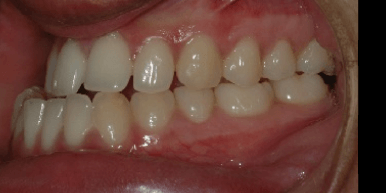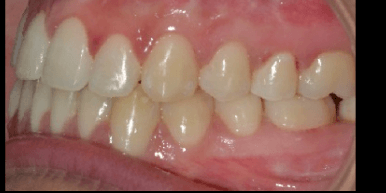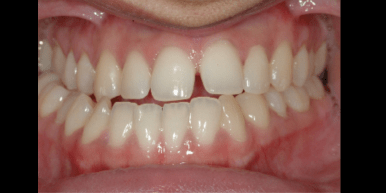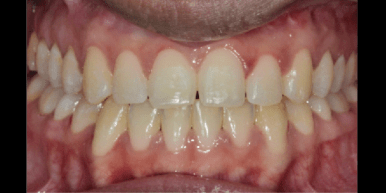Why Straighten Teeth?
Straighter properly aligned teeth perform chewing, biting and speaking functions more effectively than crooked teeth. In addition, a straight smile boosts confidence, is aesthetically pleasing to look at, and can help stave off a wide variety of dental ailments.
There are several types of malocclusion including overbite, underbite, crossbite, and overcrowding. Each of these alignment problems negatively impacts the functionality, health and cosmetic appearance of the teeth.
Here is a brief overview of some of the main disorders associated with crooked teeth:
Periodontitis – Periodontitis or gum disease begins with a bacterial infection. The bacterial infection is caused by inadequate oral hygiene which leaves bacterial colonies to grow along the teeth and gum line. Crooked teeth are hard to clean effectively, which means that debris, plaque and bacteria can build up in hard-to-reach areas. Straight teeth are much easier to clean and are at less risk of contracting gum disease.
Jaw Asymmetry – Crooked teeth can lead to improper jaw alignment when the jaws shift to achieve the best contact between upper and lower teeth. This
may result in shifting of the jaw to the left, right or forward, which is not congruent with the jaw joints.
Tooth injury – Crooked teeth often protrude outward which leaves them more susceptible to trauma. Repositioning them to a more ideal position makes them less vulnerable to injury.
Uneven wear – Crooked teeth cause some of the teeth to work harder than others when biting and chewing. As teeth do not relate together ideally, certain teeth bear more wear than avarge. Straight teeth share the workload evenly, meaning less risk of injury and better aesthetics.
If you have questions about orthodontics and straightening teeth, please ask your orthodontist.
Under Bite
An underbite happens when the teeth along the lower jaw protrude out farther than the upper front teeth. It’s usually a result of incorrect jaw alignment.


Crossbite
A crossbite occurs when a tooth (or several teeth) is situated too close to the cheek or tongue than the tooth it should align with in either the upper or lower jaw. As a result, the teeth involved in the crossbite are not able to bite against each other normally, creating an interference in the bite during chewing.


Book a Consultation
Get started today by calling us at (604) 474-1141, or by booking a consultation.
During your initial consultation, we will understand your situation, perform a visual examination of your bite, recommend a treatment plan and answer any questions or concerns you may have.
Innova Orthodontics
Monday
Closed
Tuesday
10:00am – 6:00pm
Wednesday
8:30am – 5:00pm
Thursday
8:30am – 5:00pm
Friday
7:30am – 3:00pm